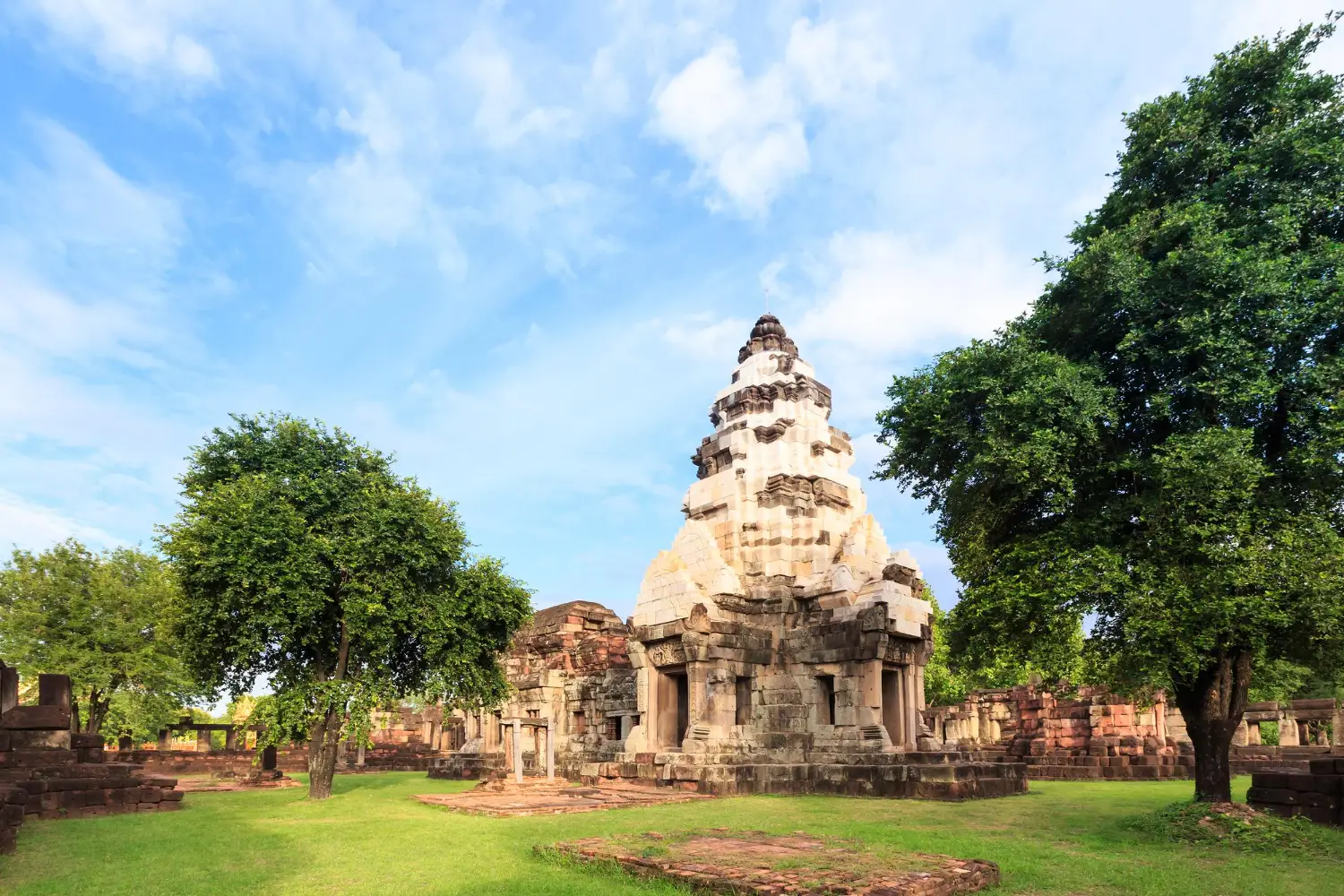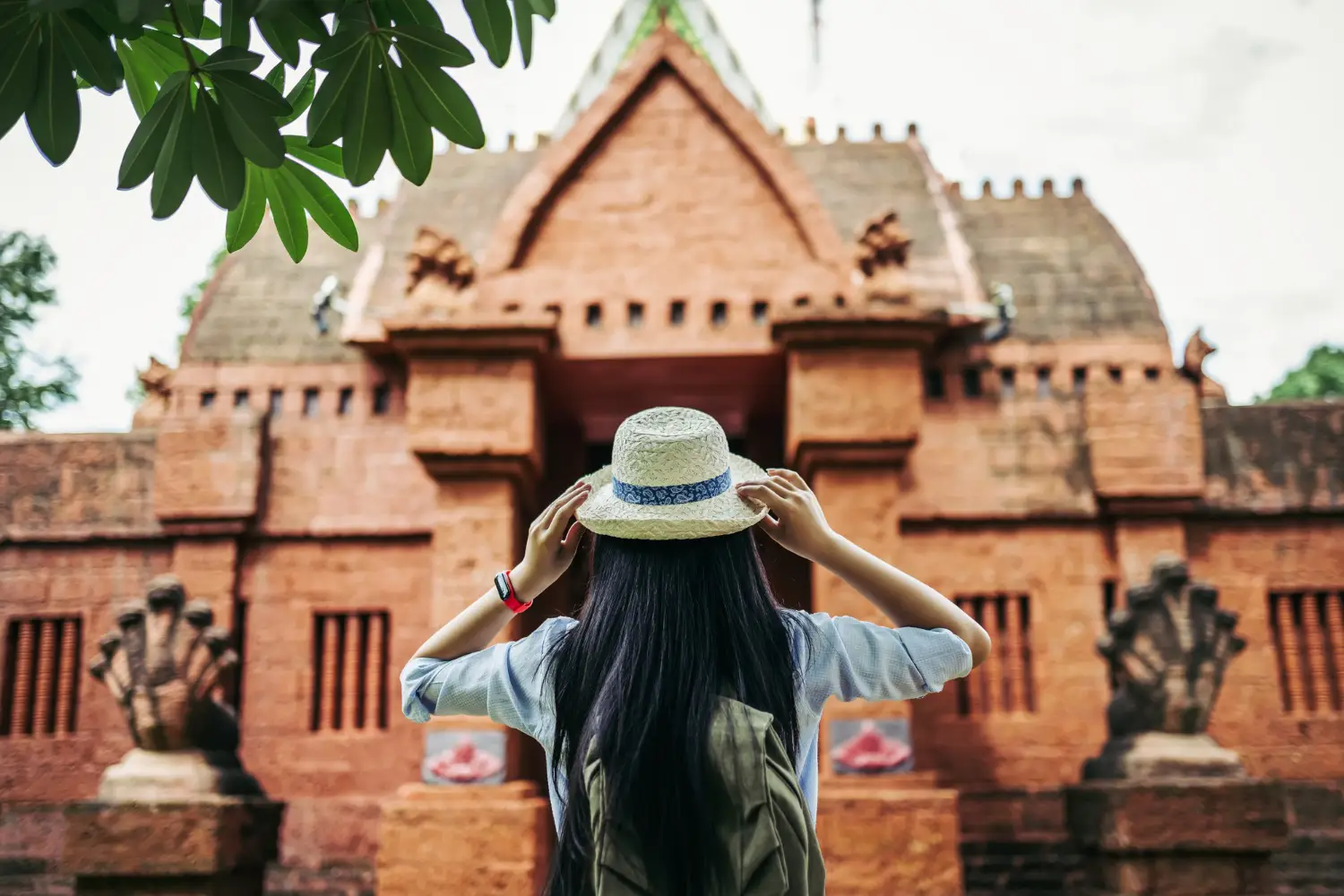Trimbakeshwar Shiva Temple In Nashik
Nestled amidst the lush greenery of the Sahyadri Hills and surrounded by sacred rivers, Trimbakeshwar Shiva Temple in Nashik is one of India’s most revered spiritual destinations. This ancient temple is a magnet for devotees, pilgrims, and spiritual seekers from across the world. Known for its rich heritage, powerful vibrations, and religious significance, Trimbakeshwar Temple is more than just a place of worship—it is a journey into the depths of India’s spiritual soul.
In this comprehensive guide, we will take you through the history, architecture, rituals, and the spiritual aura that makes Trimbakeshwar Shiva Temple in Nashik a must-visit destination.
Historical Significance
The Trimbakeshwar Shiva Temple is one of the twelve Jyotirlingas in India, which are believed to be the holiest abodes of Lord Shiva. Built in the 18th century by Peshwa Nana Saheb, the temple stands as a masterpiece of Hindu architecture and heritage. The Jyotirlinga here is unique because it represents the Trimurti—Brahma, Vishnu, and Shiva—symbolized by three faces on the Linga.
According to legends, the origin of the Godavari River, often called the Ganga of the South, is closely associated with this temple. It is believed that Lord Shiva created the river from his matted hair to bless the region, making Trimbakeshwar in Nashik a sacred place for rituals, especially for Pitra Dosh Nivaran Pooja and Narayan Nagbali.
Importance of Pooja at Trimbakeshwar
Performing Pooja at Trimbakeshwar Temple in Nashik is believed to bring peace, prosperity, and liberation from life’s obstacles. The temple is renowned for certain special poojas that are rarely conducted at other temples.
People from across India and abroad visit the temple to perform:
- Kaal Sarp Dosh
- Nivaran Pooja
- Narayan Nagbali Pooja
- Pitru Dosh Pooja
- Mahamrityunjay Jaap
- Rudrabhishek Pooja
- Tripindi Shraddha
These rituals are performed by authorized and knowledgeable pundits, trained in the Shastras and Vedas.
Major Poojas at Trimbakeshwar Temple
1. Kaal Sarp Dosh Nivaran Pooja
This is the most well-known Trimbakeshwar Pooja. People born under certain astrological alignments experience hurdles, delays, and sufferings due to Kaal Sarp Yog in their kundali. Performing this pooja at Trimbakeshwar in Nashik is believed to neutralize its effects.
Duration: 2–3 hours
Best Days: Amavasya, Nag Panchami, Sunday
Dress Code: Traditional attire (Men – Dhoti, Women – Saree)
2. Narayan Nagbali Pooja
A rare ritual performed to seek liberation for unfulfilled ancestral souls and relieve oneself from inherited karma. This pooja also helps eliminate obstacles in marriage, business, and health.
Duration: 3 days
Pre-booking required
Note: It is only performed at Trimbakeshwar Temple.
3. Pitru Dosh Pooja
This pooja is done to appease ancestors whose last rites were not performed properly. The Pitru Dosh may cause delays in career, childbirth, or finances. Performing this pooja brings blessings from forefathers.
Duration: 1 day
Best Time: Pitru Paksha or Mahalaya
4. Mahamrityunjay Jaap
A powerful chant dedicated to Lord Shiva for healing, longevity, and removal of fear. The vibration from this mantra is believed to counter even the fear of untimely death.
Duration: 1–3 days depending on the count
Ideal For: People with critical illness or facing major life challenges
5. Rudrabhishek Pooja
A sacred ritual where Lord Shiva is worshipped through Abhishekam (ritual bathing) with milk, honey, ghee, and holy water. It grants peace, prosperity, and divine protection.
Duration: 1 hour
Days: Mondays and Shravan month are highly auspicious
6. Tripindi Shraddha
An offering made for the peace of departed souls who died young or unnaturally. This ritual is recommended for people who face constant misfortune or recurring family problems.
Duration: 1 day
Time: Pitru Paksha or suggested by the priest
Spiritual Importance of Trimbakeshwar
What makes Trimbakeshwar Shiva Temple in Nashik truly special is its role in numerous Hindu rituals and spiritual practices. People from across India come here to perform Shraddha ceremonies, Kalsarpa Dosha Nivaran, Mahamrityunjaya Jaap, and more. The temple is believed to have strong cosmic energy that helps purify the soul, eliminate negative karma, and pave the way for moksha (liberation).
The priests of Trimbakeshwar Temple, known as Purohits, have maintained the traditions for centuries. Every ritual performed here is said to have a long-lasting impact on one’s spiritual journey.
A Sacred Abode of Lord Guruvayurappan
Guruvayur Temple, nestled in the cultural heartland of Kerala, stands as one of India’s most revered shrines dedicated to Lord Guruvayurappan — a divine manifestation of Lord Krishna. Often referred to as the Bhooloka Vaikunta (Heaven on Earth), this sacred temple attracts millions of devotees each year, offering them a space to connect deeply with faith, devotion, and spiritual awakening.
A Glimpse into Guruvayur’s Rich History
The origins of Guruvayur Temple are steeped in legend and devotion. It is believed that Guru, the teacher of the gods, and Vayu, the wind god, together consecrated the idol of Guruvayurappan, making this temple a place of immense celestial significance. The existing central shrine, rebuilt in 1638 CE, is a masterpiece of Kerala’s traditional temple architecture. From its intricate wooden carvings and majestic gopurams (entrance towers) to the awe-inspiring Deepastambam (pillar of light), every corner of the temple reflects the region’s enduring artistry and sacred craftsmanship.
The Divine Presence – Lord Guruvayurappan
At the heart of the temple lies the Garbhagriha (sanctum sanctorum), where the four-armed idol of Lord Guruvayurappan resides, holding the conch, discus, mace, and lotus — symbols of divine power and compassion. Devotees believe that this deity embodies immense healing energies and responds to sincere prayers with blessings, peace, and prosperity. The serene presence of Guruvayurappan evokes devotion and reverence, creating an atmosphere filled with spiritual vibration and divine grace.
Spiritual Significance and Pilgrim Experience
A visit to Guruvayur Temple is not just a religious act but a transformative spiritual journey. Devotees from across the world flock here to fulfill vows, offer prayers, and experience solace. The temple’s daily rituals, including Nirmalyam (the first unveiling of the deity in the early morning), Ucha Pooja (noon worship), and the majestic Seeveli procession — where the deity is paraded on caparisoned elephants accompanied by traditional music — create a deeply devotional experience.
Each ceremony and offering reinforces the timeless connection between devotees and the divine, leaving visitors with an overwhelming sense of gratitude and spiritual fulfillment.
Architectural Marvels and Key Attractions
Deepastambam (Pillar of Light): One of the temple’s most captivating features, the Deepastambam glows with hundreds of oil lamps, radiating a celestial aura — especially mesmerizing during festivals. Its carvings and sheer brilliance symbolize enlightenment and divine illumination.
Dwajasthamba (Flagstaff): Standing 70 feet tall and plated in gold, the Dwajasthamba represents surrender, purity, and spiritual aspiration. It stands proudly as a beacon of faith at the temple’s entrance.
Nalambalam: The square-shaped colonnade surrounding the sanctum provides a peaceful space for devotees to meditate, chant, or simply absorb the temple’s positive energy.
Gopurams: The grand entrance towers are adorned with vivid sculptures and mythological depictions, serving both as architectural marvels and gateways to the divine realm.
Krishnanattam: This traditional dance-drama, performed as an offering to the Lord, narrates the life and leelas (divine plays) of Krishna through captivating music, vibrant costumes, and expressive storytelling — a true reflection of Kerala’s cultural heritage.
Guruvayur Temple Timings
Temple Opens at 3:00 AM
3:00 AM to 3:30 AM: Nirmalyam
3:20 AM to 3:30 AM: Oil Abhishekam, Vakacharthu, Sankhabhishekam
3:30 AM to 4:15 AM: Malar Nivedyam, Alankaram
4:15 AM to 4:30 AM: Usha Nivedyam
4:30 AM to 6:15 AM: Ethirettu Pooja followed by Usha Pooja
7:15 AM to 9:00 AM: Seeveli, Palabhishekam, Navakabhishekam, Pantheeradi Nivedyam, and Morning Pooja
11:30 AM to 12:30 PM: Ucha Pooja (Midday Pooja)
A Journey of Faith and Grace
For devotees, Guruvayur Temple is more than a place of worship — it is a living embodiment of divine love, tradition, and spiritual renewal. Every visit rekindles faith, purifies the mind, and brings one closer to the grace of Lord Guruvayurappan. Whether you seek peace, fulfillment, or divine blessings, a pilgrimage to Guruvayur promises an experience that lingers in the soul long after one leaves its sacred grounds.


